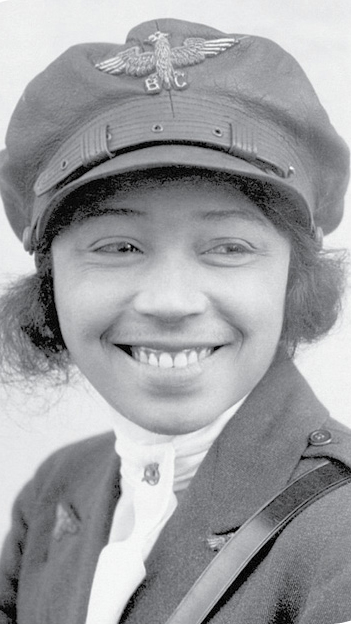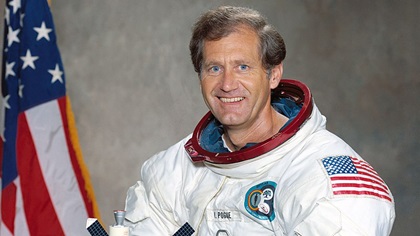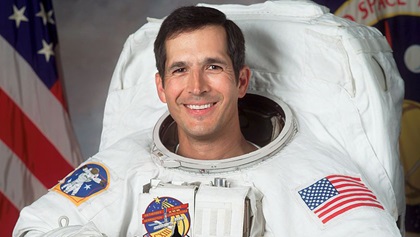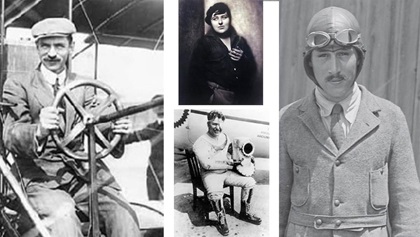Native American Heritage Month
Honoring Native American pilots and astronauts
Since then, proclamations under various names, such as “National American Indian and Alaska Native Heritage Month,” have been issued annually. For pilots, it’s a month to explore the history of pioneering Native American pilots and two astronauts who carried their heritage into space.
 Bessie Coleman
Bessie Coleman
Bessie Coleman was the first person of Native American descent to earn a pilot certificate. Her father’s grandparents had been members of the Cherokee tribe. Born in Texas on January 26, 1892, Coleman was working as a manicurist in Chicago during World War I when she became interested in flying. Since no American flight school would accept her, because she was an African American and a woman, she traveled to France where she earned her license in 1921. Coleman began her career as a stunt flyer at an airshow at Curtiss Field on Long Island, New York, the next year. The newspapers named her “Queen Bess,” “Brave Bessie,” and “the world’s greatest woman flier.” Primarily, she flew Curtiss JN–4 Jenny biplanes and other army surplus aircraft. For the next three and a half years she flew the airshow circuit while planning to open her own flight school.
On April 30, 1926, Coleman was in Jacksonville, Florida, flying as a passenger in a Curtiss Jenny she’d bought, when it went into an uncontrollable spin and she was thrown from the cockpit. It was thought that a loose wrench left in the cockpit jammed the controls. She died from the fall, age 34, and was buried near Chicago.
 Mary Riddle
Mary Riddle
The first woman enrolled in a Native American tribe to earn a pilot certificate was Mary Riddle, a member of the Quinault and Clatsop tribes in Washington. Tribal enrollment certifies a proven ancestry or residency with a particular tribe. Many people may be descended from Native Americans, at least partially, but never claim membership.
Born in 1902, Riddle was given the tribal name “Kus-de-cha,” which means Kingfisher, a brightly colored bird. She earned her pilot certificate in 1930 in Portland, Oregon, and participated in an airshow held during the 1930 Portland Rose Festival, riding to her airplane on horseback in “full tribal costume.” She was featured on the cover of the June 1934 issue of The 99er, the magazine of the International Organization of Women Pilots, now known as The Ninety-Nines Inc. Although a pilot, she was best known as a parachutist. By 1937, she was touring the United States and made more than 40 parachute jumps at airshows before an injury forced her to quit. During World War II, she was employed as a civilian aircraft inspector and later worked in a New York City office. She flew occasionally in her later years and died in 1981 at the age of 79.
 William Pogue
William Pogue
William Pogue was born in 1930 in Okemah, Oklahoma, of Choctaw ancestry. He joined the U.S. Air Force in 1951 and flew 43 fighter-bomber combat missions during the Korean War.
Pogue was selected as a member of the U.S. Air Force Thunderbirds air demonstration squadron, taught mathematics at the U.S. Air Force Academy, and became a test pilot before joining NASA as an astronaut for the Apollo program in 1966. He was a member of the support crews for Apollo 7, 11, and 14, and might have flown on Apollo 19, if it had not been cancelled. Pogue flew as pilot of the Skylab 4 mission in 1973-1974. The mission set a spaceflight duration record of 84 days aboard America’s first space station, during which Pogue made two spacewalks. It was his only flight into space. Pogue died in 2014 at age 84.
 John Herrington
John Herrington
A member of the Chickasaw Nation, John Herrington was born in Wetumka, Oklahoma, in 1958. After joining the U.S. Navy in 1984, he attended the Navy’s test pilot school, earned a master’s degree in aeronautical engineering, and was selected as an astronaut in 1996. Herrington flew as a mission specialist for STS-113, the 112th space shuttle mission, which launched on November 23, 2002. With this flight, he became the first enrolled member of a Native American tribe to fly into space. To honor his heritage, Herrington carried the Chickasaw Nation flag on the 13-day mission, during which he made three spacewalks. He retired from NASA in 2005 and currently travels the nation as an inspirational speaker.
Resources
To learn more about the history, culture, and traditions of Native American tribes, visit the National Museum of the American Indian, one of the Smithsonian Institution museums on the National Mall in Washington, D.C. It’s adjacent to the National Air and Space Museum, so it’s a two-for-one trip, airplanes and Native American history.
National Museum of the American Indian, Fourth Street and Independence Ave., SW, Washington, D.C.



